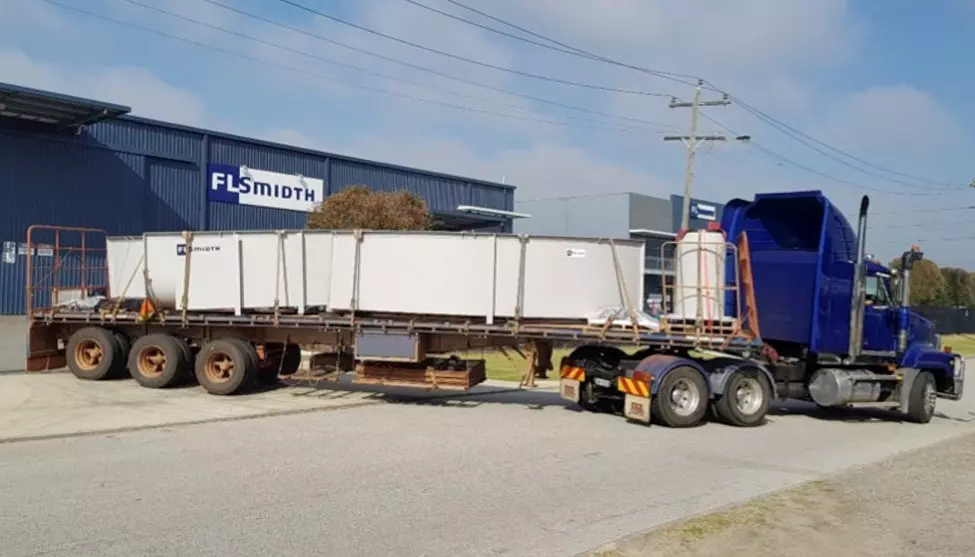The customer
Carpentaria Gold Pty Ltd Ravenswood Operation is located approximately 95km south-west of Townsville in north-east Queensland. The processing plant processes 1.5 million tons per annum of high grade underground ore using single stage crushing, SAG (semi-autogenous grinding) and ball milling, and carbon-in-leach processing with a gravity circuit for recovery of free gold. In 2013 the Ravenswood Operation produced 141,846 ounces of gold.
The problem
Carpentaria Gold Pty Ltd Ravenswood Operation, in Queensland Australia, continually strives to increase overall gold production by improving mining and processing efficiencies. Ongoing improvement initiatives have been successful in increasing overall plant recovery – in 2013 gold recovery was 94.9%. This highly optimised plant continues to emphasise continuous improvement. Despite the already excellent recovery rates, the plant still sought to further increase gold recovery, and target operational improvement projects aimed at reducing cyanide consumption and minimising raw water requirements.
The performance of the tails thickener is central to cyanide and water recovery and raw water usage. FLSmidth was approached by Carpentaria gold to conduct a review performance of the 22mØ tails thickener with a focus on optimisation and modernisation options to improve gold, water and cyanide recovery.
Gravity Gold Recovery
Gravity gold is recovered with a Knelson concentrator early in the process which accounts for approximately 60% of the overall gold recovery at Carpentaria Gold. Slurry is pumped into the Knelson concentrate cone. The concentrate cone which contains a series of concentric rings that collect the gold as it spins at a high speed to create centrifugal force. Water is pumped into the rings through capillaries (narrow hollow tubes) to fluidise the bed, optimising the separation of particulate gold from the slurry. Clean process water is essential to maximise gravity gold recovery from the Knelson concentrator. If there are solids present in the process water the capillaries become blocked which increases the water pressure and reduces gold recovery. The concentrator then needs to be shutdown frequently and taken offline for time consuming and costly maintenance to unblock the capillaries, which impacts gold recovery and raises maintenance costs.increasing flocculant dose. However, the consequence of this

Raw Water Usage and Cyanide Recovery
Operation of slurry thickeners is generally a compromise between clean overflow water and underflow density. Either the 22m tails thickener will achieve a high underflow density which enables maximum water and cyanide recovery. Or it operates to improve overflow water clarity enabling a positive impact on gravity gold recovery. The second option is achieved primarily through reducing mud bed levels and increasing flocculant dose. However, the consequence of this approach is inevitably lower underflow density, reduced water recovery and therefore increased raw water usage, lower cyanide recovery, and excessive flocculant usage.
Alternate solutions considered
New thickener
A new thickener with higher side wall height and a longer mud residence time would enable cleaner overflow water with higher underflow density. This would enable improved gravity gold recovery and maximum water and cyanide recovery. This option would involve a significant capital expense.
Process water filtration plant
This option would enable the thickener to operate achieving maximum underflow density, water and cyanide recovery, and the solids removed from the dirty overflow in a filtration plant. Again, this option would involve a significant capital expense.
Upgrade the existing thickener
The lowest cost option would be to upgrade the feed system of the tails thickener to enable high underflow density (aiding water and cyanide recovery) and the production of clean overflow water for optimum gravity gold recovery.
Final solution
The original feed system on the tailings thickener installed in 2000 was based on a higher feed rate using the technology of the day. The feed system was corroded and in need of replacement. After years of being fed leach tailings it had reached the end of its serviceable life. This presented an excellent opportunity for Carpentaria Gold to investigate modern technology alternatives.
FLSmidth designed a new feed system incorporating E-duc feed dilution technology and our
latest revolutionary thickener innovation - Evolute™ feedwell.
Evolute™ feedwell technology
The technologyThe Evolute™ feedwell is the result of years of laboratory, CFD (computational fluid dynamics) and pilot scale development work. It is designed to maximise the critical parameters of “best practice” feedwell performance, and incorporate all the benefits of both closed and open bottom feedwells, maintaining all the positive attributes of both designs without the drawbacks. Those being;
Larger aggregate growth with less flocculant
E-Duc feed dilution and flocculation prior to the feedwell allows for excellent mixing conditions for contact of flocculant. This, followed by the low turbulence and further flocculation in the Evolute™ feedwell, provides the optimal environment for flocculation and aggregate growth, minimising flocculant and increasing settling rates.Maximising aggregate size with minimal flocculant allows for improved compaction in the mud bed, improving rheology and increasing underflow density.Full width entry Evolute™ shelf increases residence time and reduces short circuiting
The unique full shelf width entry of the Evolute™ feedwell allows for maximum residence time within the feedwell, increasing mixing and aggregate growth as well as reducing un-agglomerated fines and un-absorbed flocculant.The involute shape of the Evolute™ feedwell promotes even distribution of agglomerated solids into the thickener, minimising the risk of point loading of the raking mechanism, and maximising settling capacity of the thickener, whilst reducing internal dilution within the feedwell, negating any benefits of closed bottom feedwells.
Low shear exit improving settling rate and clarity
The open exit of the Evolute™ feedwell provides a large surface area for aggregate throughput. This large surface area reduces velocities and turbulence as the slurry exits the feedwell, reducing shear and minimising aggregate breakage which can occur in closed bottom feedwells. The reduced shear induced breakage increases settling rates, improves clarity and maximises density.
Installation
FLSmidth and Carpentaria Gold collaborated at the start of the project to establish measurable performance criteria to determine qualitative and quantitative benefits of the upgrade.

The criteria included:
- Overflow water clarity
- Knelson concentrator feed water pressure
- Knelson concentrator scheduled maintenance intervals
- Flocculant consumption
- Underflow density
- Cyanide recovery
- Raw water usage
- Scale inhibitor usage
Baseline qualitative and quantitative performance was measured for a period of time prior to the feedwell upgrade. Naturally, the performance was re-measured after the installation period.
The Evolute™ feedwell upgrade was designed specifically for retrofitting onto the existing structure. FLSmidth engineers designed the new feedwell for easy installation, utilising a segmented shell and clamps for attachment leaving minimal work to be done on site. This allowed for the installation to occur without having to lift the bridge and mechanism. The removal of the old feedwell and installation of the Evolute™took only two shifts to complete on site.CFD image showing fluid vectors exiting the Evolute™ feedwell.
Results
The upgrade to the Evolute™ feedwell on the 22mØ tailings thickener at Carpentaria Gold completed in October 2013 brought about immediate improvements in thickener operation.
Process data from the site PI and laboratory data from grab samples have shown:
- The Knelson concentrator process water feed pressure stabilised, indicative of negligible capillary fouling. The result being the security of full plant availability ensuring gravity recovery of gold as well as a reduction in maintenance costs
- Visibly significantly improved thickener overflow clarity
- Significantly improved solids settling rate, leading to a 40% reduction in flocculant
- Improved settling coupled with the reduction in overflow solids allowed for increased mud bed growth and underflow density
- Reduced pumping costs for tails dam water reclamation
- Reduced raw water intake
- Increased recovery of cyanide that would have been lost to tails
- Lower solids in the process water allowed for a ~35% reduction in scale inhibitor chemical